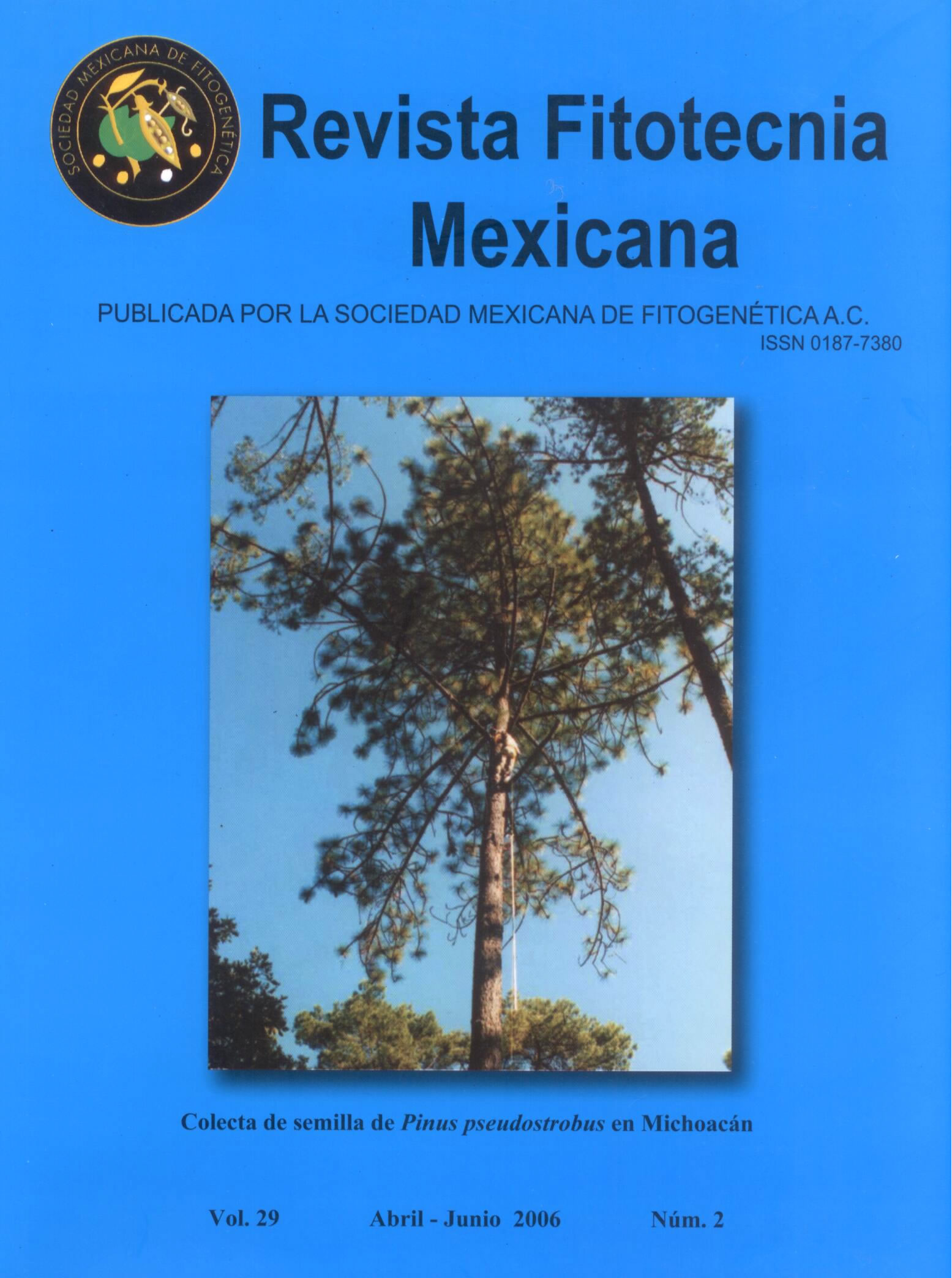GROWTH ANALYSIS AND SINK-SOURCE RELATIONSHIPS IN TWO POTATO (Solanum tuberosum L.) VARIETIES
Main Article Content
Abstract
The growth analyses and the sink-source relationships of two potato cultivars were studied to explain the level of biomass accumulation and tuber yield. The experiment was carried out in Metepec, Estado de México during the Summer of 2002, in a complete randomized block design with four replications. Stem, leaf and tuber dry weight and leaf area of cv. ‘Alpha’ and ‘Milagros’ grown at one mainstem were measured according to the plant growth analysis technique. Polinomial models fitted to these data were used to calculate the mean absolute growth rate or sink strength ( TAC ), as estimator of the sink strength (FD); the mean relative growth rate ( TRC ), as estimator of the sink activity; the mean net assimilation rate ( TAN ), and the strength of the source (FF) as estimators of the sink-source relationships. ‘Alpha’ had 45 % more biomass than ‘Milagros’ through all the growth period. The shoot biomass at the beginning of tuberization represented 80 % of the total biomass in both cultivars; however, this percentage declined to 28 % in ‘Alpha’ and 52 % in ‘Milagros’ at the final sampling date. The sink strength ( TAC ) was
bigger in ‘Alpha’ (7.3 g d-1) than in ‘Milagros’ (3 g d-1). Leaves and stems had the largest sink strength until 22 and 51 d after emergency (dde) in ‘Alpha’ and ‘Milagros’; afterwards, tubers became the main organ in sink strength. The source strength was 56 % bigger in ‘Alpha’ than in ‘Milagros’. ‘Alpha’ produced more tubers and higher total (58 %) and commercial (40 %) yield than ‘Milagros’.

